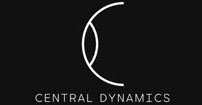IT Infrastructure, Hardware, Software, and Security
IT Infrastructure, Hardware, Software, and Security
Introduction
This document provides comprehensive details about IT services related to IT infrastructure, hardware, software, and security. It also includes a section on best practices for data protection and compliance, ensuring that your organization adheres to industry standards and regulatory requirements.
IT Infrastructure
The IT infrastructure forms the backbone of an organization’s technological capabilities. It consists of physical and virtual components that support the operations, storage, processing, and communication of information.
Network Infrastructure
A reliable network infrastructure is essential for seamless connectivity within and between organizational units. Key elements include:
- Routers and Switches: Manage data traffic efficiently.
- Firewalls: Protect the network from unauthorized access.
- Servers: Host applications, databases, and files.
- Data Centers: Centralized repositories for data storage and management.
Cloud Infrastructure
Cloud infrastructure offers scalable and flexible solutions for data storage and processing. It includes:
- Public Cloud: Services provided by third-party vendors accessible via the internet.
- Private Cloud: Dedicated environments for specific organizations, offering enhanced security.
- Hybrid Cloud: Combines public and private cloud elements, optimizing performance and cost.
Hardware
Hardware components are the tangible parts of an IT system. They include:
- Computers and Workstations: Essential for daily operations and user access to systems.
- Servers: Central hubs for processing and managing data.
- Peripheral Devices: Printers, scanners, and other auxiliary equipment.
- Storage Devices: Hard drives, SSDs, and external storage solutions for data retention.
Software
Software is the set of programs and applications that enable hardware to perform specific tasks. It comprises:
- Operating Systems: Platforms like Windows, macOS, and Linux that manage hardware resources.
- Application Software: Programs such as Office suites, email clients, and CRM systems that facilitate business operations.
- Utility Software: Tools for system maintenance and optimization, including antivirus programs and disk cleaners.
Security
Security is a critical aspect of IT services, ensuring the protection of data, systems, and networks from threats. Key components include:
- Endpoint Security: Protects individual devices such as laptops and smartphones from cyber threats.
- Network Security: Safeguards the integrity and accessibility of the network.
- Application Security: Ensures software applications are secure from vulnerabilities and attacks.
- Data Security: Protects data from unauthorized access and breaches.
Best Practices for Data Protection and Compliance
Implementing best practices for data protection and compliance helps organizations safeguard their information and adhere to relevant laws and regulations.
Data Protection
Effective data protection strategies include:
- Data Encryption: Encrypt sensitive data at rest and in transit to prevent unauthorized access.
- Access Controls: Implement role-based access controls to limit data access to authorized personnel only.
- Data Backup and Recovery: Regularly back up data and establish recovery protocols to ensure business continuity in case of data loss.
- Data Masking: Use data masking techniques to obfuscate sensitive information in non-production environments.
Compliance
Adhering to compliance standards involves:
- Regulatory Frameworks: Understand and comply with relevant regulations such as GDPR, HIPAA, and CCPA.
- Audit Trails: Maintain detailed logs of data access and modifications to support audits and investigations.
- Security Policies: Develop and enforce comprehensive security policies to guide organizational practices.
- Employee Training: Conduct regular training sessions to ensure employees are aware of data protection and compliance requirements.
Conclusion
This document outlines the essential aspects of IT infrastructure, hardware, software, and security, along with best practices for data protection and compliance. By following these guidelines, organizations can enhance their IT capabilities, protect their data, and maintain compliance with regulatory standards.


